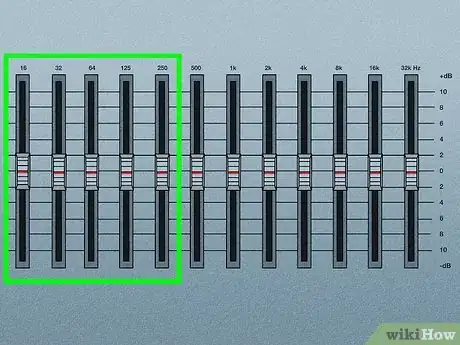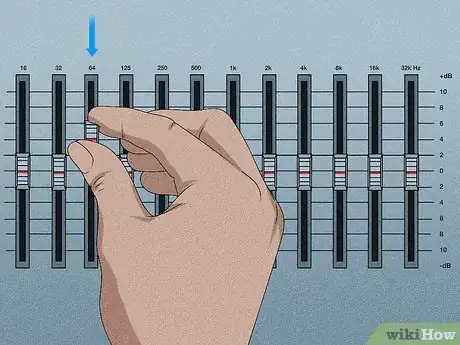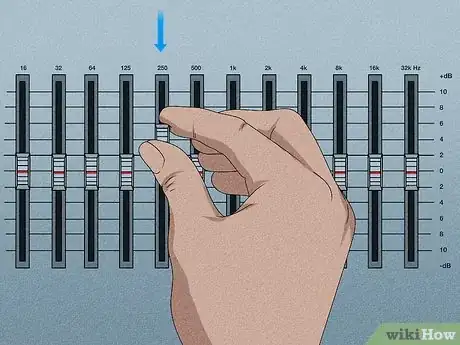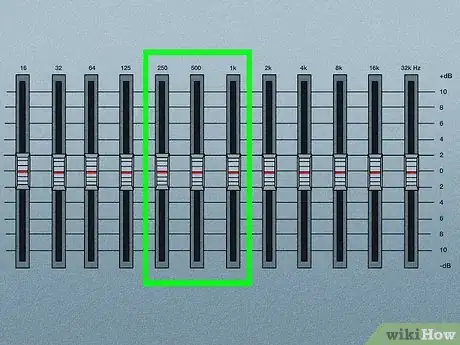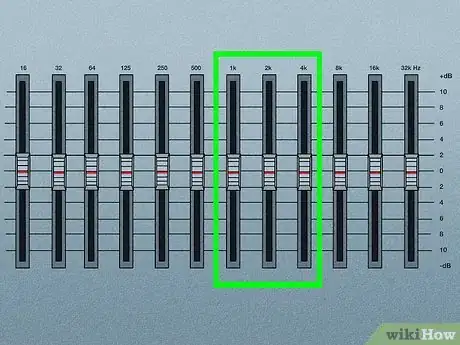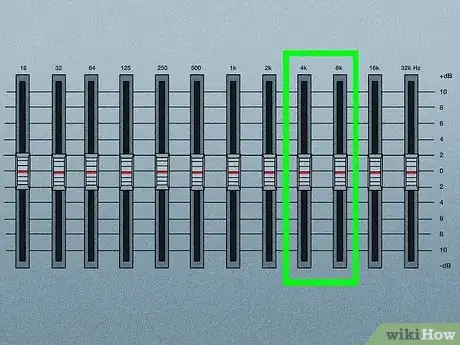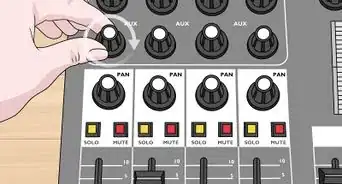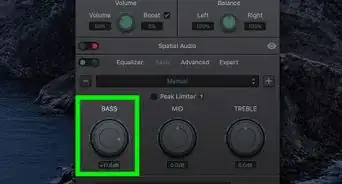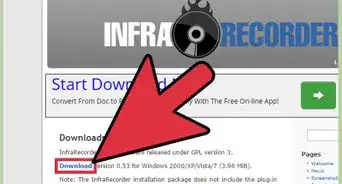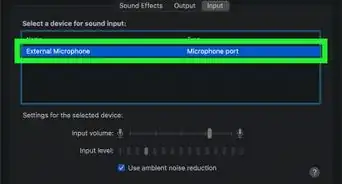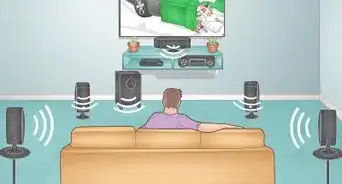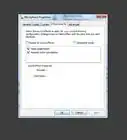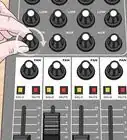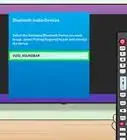This article was co-authored by Jason Williams and by wikiHow staff writer, Cory Stillman. Jason Williams is an AV & Security Specialist and the Owner of Williams AV & Security. With more than 35 years of experience, he specializes in home automation and home theater system installations. Jason is an AVIXA Certified Technology Specialist, a CEDIA Certified Cabling & Infrastructure Technician, a Pakedge Certified Network Administrator, and holds a Georgia Low Voltage Unrestricted License.
This article has been viewed 193,942 times.
Everyone wants their music to sound the best it possibly can, but equalizer settings can be rather overwhelming. Finding the ideal EQ settings for bass-heavy music can be particularly difficult, as you want a setting that makes your music sound crisp, not muddy. Fortunately, audiophiles and casual listeners alike can master their EQ and truly elevate their listening experience. Keep in mind that EQ settings remain a matter of personal preference, and can often change depending upon your audio device, so be sure to experiment and find what works well for you. This wikiHow will help you identify the best EQ settings for bass, and explain a wide range of EQ settings.
Steps
The Best Equalizer Setting For Bass
-
1Bass exists between about 20Hz and 200Hz. Hz, or Hertz, measure audio frequencies, and are the common unit of measurement fused in all equalizers. Every musical note corresponds with a frequency. If you want to maximize your bass-heavy music, you need to adjust your equalizer within the 20-200Hz range by boosting the decibels (dB) in that range. [1] Of course, that remains a rather wide range, so we have broken it down according to your musical needs...
-
2Hip-hop basslines start at 60Hz. Get the most out of your favorite hip-hop tunes, or even create some beats of your own, by increasing the dB around 60Hz on your EQ. This is where bass-heavy synth pads typically sit, alongside heavy kick drums and bass guitars.
- Unless you own a high-quality subwoofer, you may want to cut off or reduce frequencies lower than 50Hz, as this is where it tends to sound muddy. This "sub-bass" region is typically reserved for the guttural, eerie sounds of sci-fi and action films. [2]
Advertisement -
3Pianos and strings are in the 200Hz range. If you want to play a deep register on an acoustic guitar, piano, or another string instrument, boost the dB towards the higher end of the bass frequency range. Even bass-heavy brass instruments and vocals can be elevated by increasing the dB in the 200Hz range. [3]
- Be sure to experiment with a few different settings in this range. Some instruments may not require as much adjustment as others, so experiment accordingly so as to avoid any muddying or distortion.
- If you use a parametric equalizer, it is generally best to cut from your EQ settings as opposed to boosting them, by reducing all frequency sliders higher than your bass frequencies, such that your bass is relatively louder. This approach helps avoid audio distortion caused by clipping.
- If you still want to boost rather than cut, pay attention to the clipping indicator on your equalizer, typically included on any software or hardware EQ. If the clipping light blinks, you may need to reduce the amount you have boosted your bass.
Best Equalizer Settings For Other Genres
-
1Acoustic mixes well with low-mid frequencies. Equalizers can be a great way to give your bass some extra punch, but those settings won't work well with every genre. Acoustic songs avoid those low frequencies, and instead operate in what are called "low-mids," which range from 250Hz to approximately 1500Hz. [4]
- Adjusting your low-mid frequencies for acoustic music requires a lot of care and precision. The lower end of most instruments sits in this range, so excessive boosting/cutting can cause too much noise or overcrowding.
-
2Pop music belongs to the high-mid frequencies. Pop music tends to place a lot of emphasis on the vocals, and most vocals can be found in the high-mid frequency range, which starts around 1500Hz and roughly extends to 4kHz.
- Like with other genres, pop music requires a great deal of trial and error. The high-mid frequency range is rather large, so you will want to experiment with different settings until you determine what sounds best to your ears.
-
3Electronic music requires some tweaking of the Presence. Presence refers to one of the higher EQ ranges, stretching from 4kHz to 7kHz. Presence provides unique clarity to most songs, and can often key in on specific sounds. Of course, not every genre benefits from such clarity, but electronic, which tends to deemphasize vocals and stress digital sounds, can really strive with the proper Presence settings.
- Electronic music can refer to a wide variety of songs, and many tend to be bass-heavy. You may want to experiment with a combination of Presence and bass settings when optimizing your EQ for electronic.
-
4Rock music combines both high-mids and low-mids. Rock music can be a difficult genre to optimize on your equalizer, as electric guitars tend to sit in the high-mids, while rock drums and deep vocals lean more towards the low-mids. As always, experiment here to determine what sounds best to you.
- Rock guitarists tend to refer to the "rock curve," in which your optimal EQ settings form a proper curve. [5] If you are using your EQ to create rock music, the curve might suit your needs. If you are simply listening to music, you may have a different set of EQ needs.
References
- ↑ https://www.digitaltrends.com/home-theater/eq-explainer/
- ↑ https://www.soundguys.com/how-to-equalize-fine-tune-your-listening-experience-16410/
- ↑ https://www.digitaltrends.com/home-theater/eq-explainer/
- ↑ https://www.armadamusic.com/university/music-production-articles/eq-explained-the-basics
- ↑ https://www.guitarworld.com/features/a-guitarists-guide-to-eq-how-to-make-your-guitar-tone-bigger-and-better-than-ever-before
